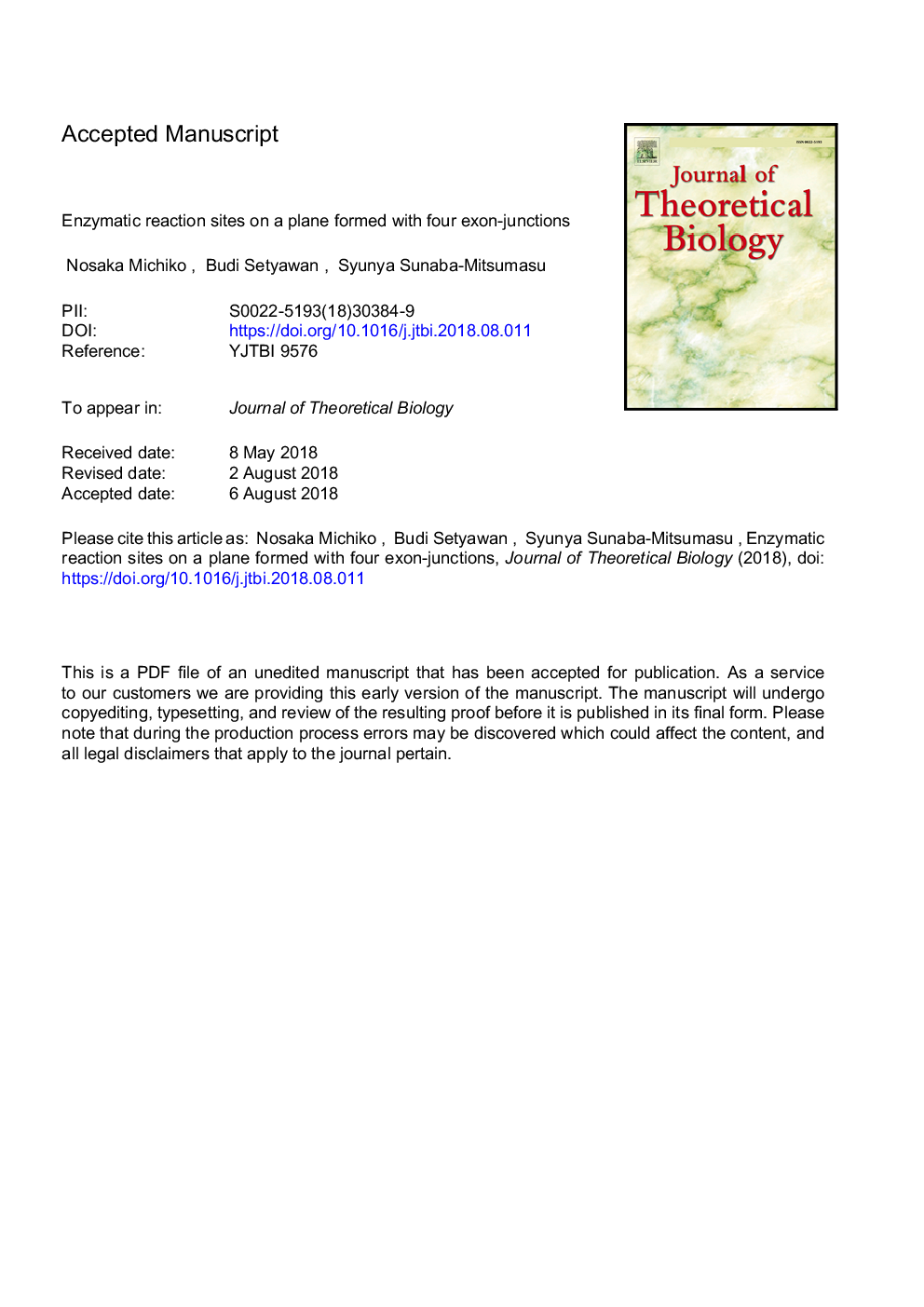| Article ID | Journal | Published Year | Pages | File Type |
|---|---|---|---|---|
| 10138664 | Journal of Theoretical Biology | 2018 | 23 Pages |
Abstract
Understanding the interaction of an enzyme with its substrate is important for the research of protein function. However, there is still no satisfactory explanation for protein folding, in spite of the continuous efforts by many excellent researchers. We present a novel approach for analysing enzyme-substrate complexes. Previously, we showed how four exon-junctions, in a domain of enzyme and carrier protein structures, form a plane around their respective ligands. Here, we report the formation of two planes by two combinations of four exon-junctions within the large enzyme, aspartate aminotransferase. Almost all the ligand atoms are located within one plane, while the other plane contains most linker-residue atoms of the coenzyme, suggesting that the former and latter planes serve as the enzyme reaction and support areas, respectively. Simulation results revealed that two-plane formation is possible in the enzyme with four random positions; however, the relationship between the coenzyme ligating substrate and the plane is significant and is biologically important. We describe the formation of such planes around the ligand, including the ligating residue for the coenzyme with no substrate.
Related Topics
Life Sciences
Agricultural and Biological Sciences
Agricultural and Biological Sciences (General)
Authors
Nosaka Michiko, Budi Setyawan, Syunya Sunaba-Mitsumasu,
